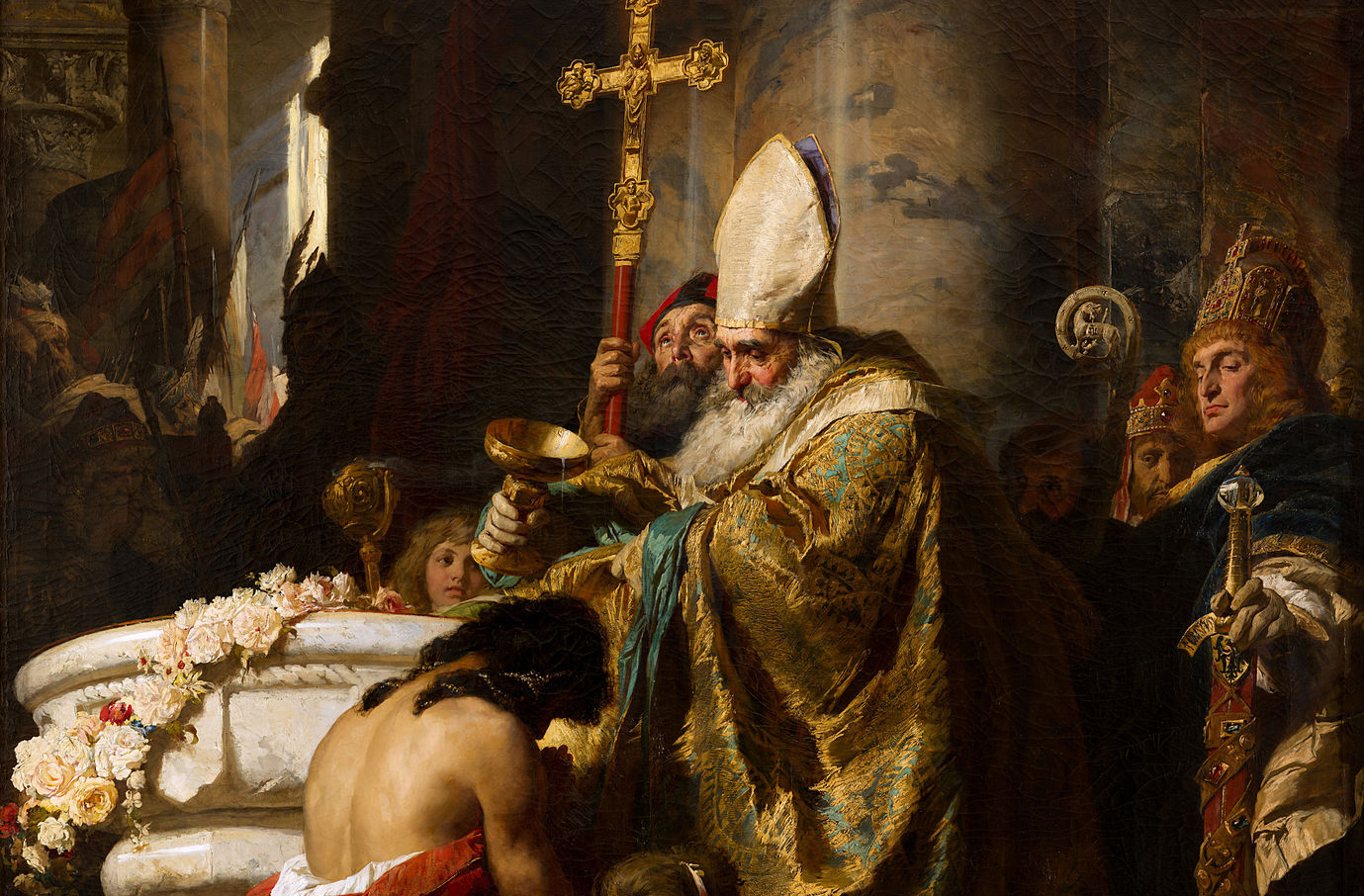
Baptism is a Christian sacrament of initiation and adoption, almost invariably with the use of water. It may be performed by sprinkling or pouring water on the head, or by immersing in water either partially or completely, traditionally three times, once for each person of the Trinity. The synoptic gospels recount that John the Baptist baptized Jesus. Baptism is the sign of new life in Christ. Baptism unites Christ with his people. That union is both individual and corporate. Christians are, it is true, baptized one by one, but to be a Christian is to be part of a new creation which rises from the dark waters of Christ’s death into the dawn of his risen life. Christians are not just baptized individuals; they are a new humanity.
We are always happy to welcome candidates for Holy Baptism. If you live in the Partnership area and are seeking baptism for you or your child then you should begin by attending Sunday worship and introducing yourself to the Priest. At that initial meeting we will decide together the date for the baptism. If your roots are in this Diocese and you wish a baptism here but are living away you should initiate contact for baptism preparation in your local parish and also contact the Partnership Priest by telephone at least 3 months in advance of your desired baptism date. The Anglican Church of Canada baptizes both infants and adults to receive them into the family of God. For further information on baptisms please access the material (in pdf) listed below.
-
LITURGY HOLY BAPTISM
-
HOLY BAPTISM

Holy Baptism
As the World Council of Churches document Baptism, Eucharist and Ministry has reminded Christians, the scriptures of the NewTestament and the liturgy of the Church unfold the meaning of baptism in various images (often based on Old Testament water symbols) which express the mystery of salvation. Baptism is participation in Christ’s death and resurrection (Romans 6.3–5; Colossians 2.12); a washing away of sin (1 Corinthians 6.11); a new birth (John 3.5); an enlightenment by Christ (Ephesians 5.14); a reclothing in Christ (Galatians 3.27); a renewal by the Spirit (Titus 3.5); the experience of salvation from the flood (1 Peter 3.20–21); an exodus from bondage (1 Corinthians 10.1–2) and a liberation into a new humanity in which barriers of division, whether of sex or race or social status, are transcended (Galatians 3.27–28; 1 Corinthians 12.13). The images are many but the reality is one.
Several dimensions of baptism became clear as the early Church developed its practice. Initiation into the Church was a vital concern of the whole Christian community and not only of the candidates for baptism and their immediate families. Preparation for baptism was a responsibility shared among various members of the community, both ordained and lay. Becoming a Christian had as much to do with learning to live a new lifestyle within the Christian community as it did with specific beliefs. When the day of baptism finally arrived, the event took place within the context of the Sunday eucharist, when the whole community was gathered and where the newly baptized received communion for the first time. -Book of Alternative ServicesThe Baptism of Vajk by Gyula Benczúr won First Prize in competition Minister of Culture József Eötvös announced with the purpose of promoting historical painting in Hungary. In the study prepared for the painting, which was eventually entered for the competition, a conspicuous group of pagan Hungarian was present. When the final picture was completed in 1875, there was no indication of the pagans, i.e. the opposition; after the political compromise between Hungary and Austria in 1867, those who financed the competition preferred a rendering of this decisive event without allusions to any conflicts. Vajk (the later King St. Stephen) is seen kneeling in the foreground, to be baptized by Saint Adalbert, dressed in ornate attire.
DESIGN BY
H2 DESIGN PIXEL
https://rondeaubaytransfiguration.org/resources/blogpage/
https://rondeaubaytransfiguration.org/resources/lectionary/
https://rondeaubaytransfiguration.org/
https://rondeaubaytransfiguration.org/rites/funerals/
https://rondeaubaytransfiguration.org/rites/baptism/
https://rondeaubaytransfiguration.org/rites/weddings/
https://rondeaubaytransfiguration.org/churches/stjohns/
https://rondeaubaytransfiguration.org/churches/stmatthews/
https://rondeaubaytransfiguration.org/churches/christchurch/
https://rondeaubaytransfiguration.org/churches/advent/
https://rondeaubaytransfiguration.org/churches/trinity/
https://rondeaubaytransfiguration.org/churches/stpauls/
https://rondeaubaytransfiguration.org/#top
https://rondeaubaytransfiguration.org/#section1
https://www.rondeaubaytransfiguration.org/Statistics/
https://www.rondeaubaytransfiguration.org/resources/blogpage/
https://www.rondeaubaytransfiguration.org/resources/lectionary/
https://www.rondeaubaytransfiguration.org/
https://www.rondeaubaytransfiguration.org/rites/funerals/
https://www.rondeaubaytransfiguration.org/rites/baptism/
https://www.rondeaubaytransfiguration.org/rites/weddings/
https://www.rondeaubaytransfiguration.org/churches/stjohns/
https://www.rondeaubaytransfiguration.org/churches/stmatthews/
https://www.rondeaubaytransfiguration.org/churches/christchurch/
https://www.rondeaubaytransfiguration.org/churches/advent/
https://www.rondeaubaytransfiguration.org/churches/trinity/
https://www.rondeaubaytransfiguration.org/churches/stpauls/
https://www.rondeaubaytransfiguration.org/#top
https://www.rondeaubaytransfiguration.org/#section1
